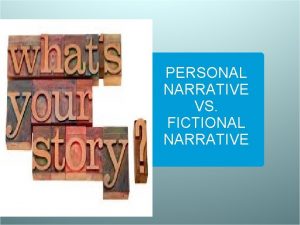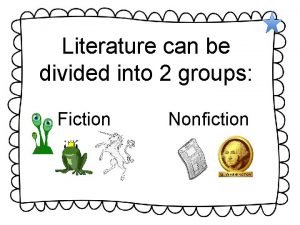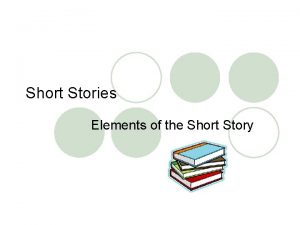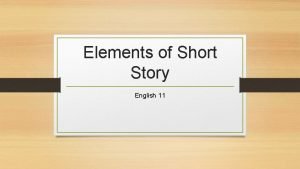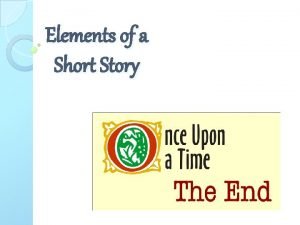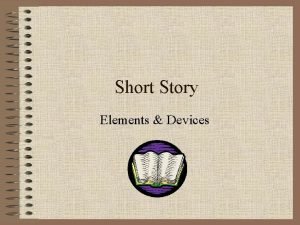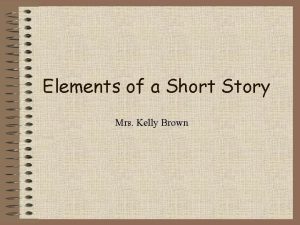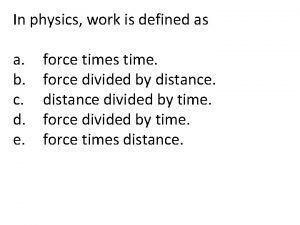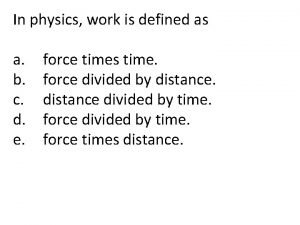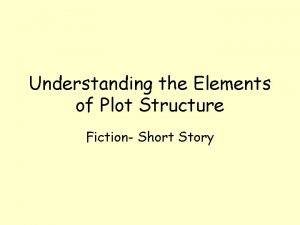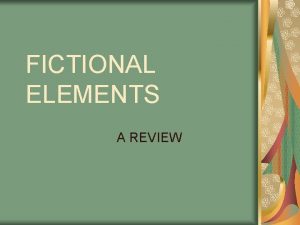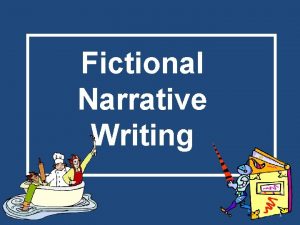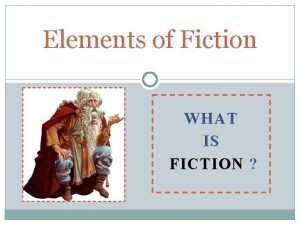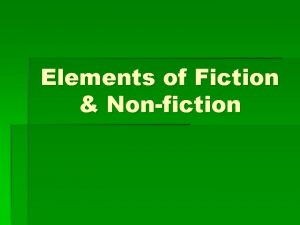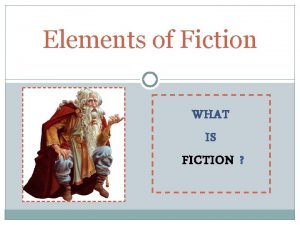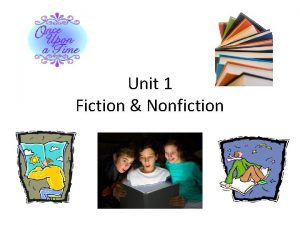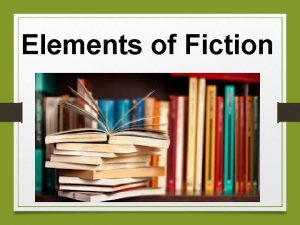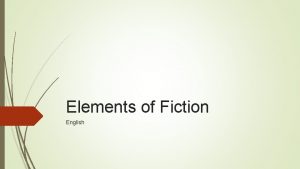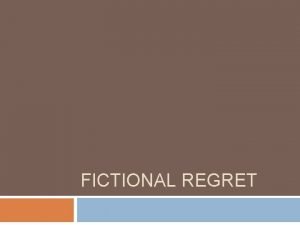Elements of Fiction In most fictional stories one













- Slides: 13

Elements of Fiction In most fictional stories, one main character faces a conflict that is resolved in the plot. In addition, it usually conveys a theme or message about life.

There are 5 Main Elements: Plot Characters Setting Point of View Theme

PLOT The sequence of events in a story is called the “plot”. It involves both characters (protagonist & antagonist) and a problem, or conflict.

PLOT Think of plot as a roller coaster. The “rising action” builds up for a long period of time before you get to the “climax, ” and then after the most intense moment comes the “falling action” and “resolution” when you are safely back at the docking station.

PLOT COMPONENTS Exposition: We’re introduced to the characters & setting of the story. Rising Action: Consists of the inciting incident (the incident that kicks off the “juicy” part of the plot) and the series of conflicts and crisis in the story that lead to the climax. There is not just one event in the story that is “rising action”, but MANY events that make up this component. Climax: The turning point of the story and the most intense moment—either mentally or in action; the “BIG DECISION” that affects the outcome. The theme is often discovered in the climax. Falling Action: All of the action which follows the climax. Resolution: The conclusion; the conflict is resolved.

CONFLICT Conflict is the dramatic struggle between two forces in a story. Without conflict, there is no plot.

External CONFLICT Man vs. Nature This was my favorite shirt! Man vs. Society

Internal CONFLICT Man vs. Self Mrs. Dargavel’s class is SO hard! But I love it SO much!!!

CHARACTERS The characters in a story are the people or animals who participate in the action. A character can be described directly or indirectly. With direct characterization, the writer makes direct statements about a character's personality and tells you what the character is like. “Peter is lazy. ” With indirect characterization, the writer makes indirect statements and reveals the character’s traits through thoughts, words, and actions. “Peter was bored with the show, but the remote was far away. ”

CHARACTER Types Protagonist: the central character in a plot’s conflict. The protagonist isn’t just the “good guy, ” but the character experiencing the conflict. Antagonist: the force in conflict with the protagonist Foil Character: a character whose traits help to highlight or accentuate the protagonist’s qualities. Stereotype: a character who possesses expected traits of a group rather than being an individual.

CHARACTER Development Character development is showing the multitude of traits & behaviors that give the character the complexity of a human being. This affects the quality of the story. Round character: fully-developed, with many traits, both good and bad, shown in the story. We feel we know the character so well they’re almost real. Flat character: not fully-developed; we usually see only one side of the character.

CHARACTER Development The amount of change in a character affects the quality of the story too. Dynamic character: experiences a basic change in character through the events of the story. Static character: does not experience a change through the events of the story.

SETTING The setting of a story is the time and place of the action. Time can include not only the historical period – past, present, or future– but also a specific year, season, or time of day. Place may involve not only the geographical place– a region, country, state or town– but also the social, economic, or cultural environment.
 Narrative nonfiction elements
Narrative nonfiction elements Narrative vs story
Narrative vs story It is a genre of speculative fiction dealing
It is a genre of speculative fiction dealing Contemporary realistic fiction vs historical fiction
Contemporary realistic fiction vs historical fiction Fiction and non fiction activities
Fiction and non fiction activities Prose narrative
Prose narrative Short story parts
Short story parts 5 elements of literature
5 elements of literature Identify the elements of short story
Identify the elements of short story What is a short
What is a short Five story elements
Five story elements In physics, work is defined as *
In physics, work is defined as * In physics, work is defined as
In physics, work is defined as Plot structure of fiction
Plot structure of fiction

